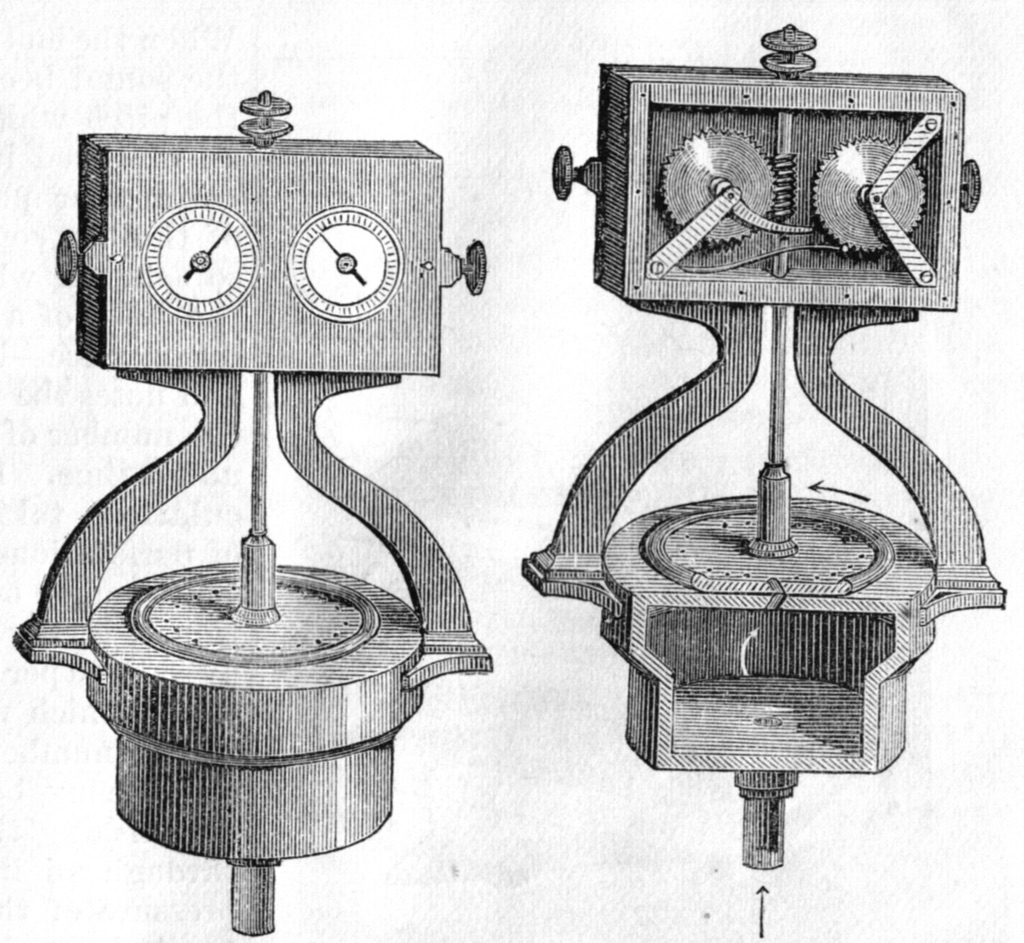
In 1819 an improved siren was invented and named by Baron Charles Cagniard de la Tour. De la Tour's siren consisted of two perforated disks that were mounted coaxially at the outlet of a pneumatic tube. One disk was stationary, while the other disk rotated. The rotating disk periodically interrupted the flow of air through the fixed disk, producing a tone. De la Tour's siren could produce sound under water, suggesting a link with the sirens of Greek mythology; hence the name of the instrument. Wikipedia, Siren
Keely In all molecular dissociation or disintegration of both simple and compound elements, whether gaseous or solid, a stream of vibratory antagonistic thirds, sixths, or ninths, on their chord mass will compel progressive subdivisions. In the disintegration of water the instrument is set on thirds, sixths, and ninths, to get the best effects. These triple conditions are focalized on the neutral center of said instrument so as to induce perfect harmony or concordance to the chord note of the mass chord of the instruments full combination, after which the diatonic and the enharmonic scale located at the top of the instrument, or ring, is thoroughly harmonized with the scale of ninths which is placed at the base of the vibratory transmitter with the telephone head. The next step is to disturb the harmony on the concentrative thirds, between the transmitter and the disintegrator. This is done by rotating the siren so as to induce a sympathetic communication along the nodal transmitter, or wire, that associates the two instruments. When the note of the siren becomes concordant to the neutral center of the disintegrator, the highest order of sympathetic communication is established. It is now necessary to operate the transferable vibratory negatizer or negative accelerator, which is seated in the center of the diatonic and enharmonic ring, at the top of the disintegrator, and complete disintegration will follow (from the antagonisms induced on the concordants by said adjunct) in triple progression, thus: First thirds: Molecular dissociation resolving the water into a gaseous compound of hydrogen and oxygen. Second: sixths, resolving the hydrogen and oxygen into a new element by second order of dissociation, producing what I call low atomic ether. Third: ninths, the low atomic ether resolved into a new element, which I denominate high or second atomic harmonic. All these transmissions being simultaneous on the disturbance of sympathetic equilibrium by said negative accelerator. [Snell Manuscript - The Book, page 4]
See Also
